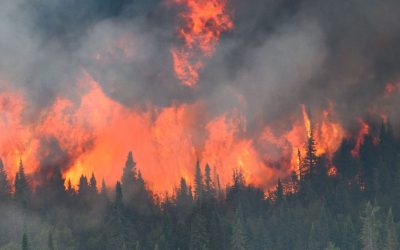Professor Barry Cooper reviews Elizabeth Nickson’s controversial book “eco-fascism” and discusses the threat that radical conservationism poses to the development of smart environmental policy in Canada.
Elizabeth Nickson can write. She developed her skills as a foreign correspondent for Time magazine and as a European bureau chief for Life magazine; later, she was a columnist for The Globe and Mail and the National Post. Nickson has even written a novel about a CIA mindcontrol program conducted in Montreal. Her latest book is Eco-Fascists: How Radical Conservationists are Destroying our Natural Heritage.1 One review quite properly described it as a “game changer” because it clarifies so much of the moralizing nonsense spouted by contemporary conservationists, preservationists, enviros, sustainability advocates, and a host of other selfdescribed improvers, progressives and green do-gooders.
Eco-Fascists deals with two related topics: (1) the difficulties Nickson experienced in securing permission to subdivide her property on Salt Spring Island and (2) the larger context of North American environmentalism within which this local process unfolded. The two are linked because the “incidents” she encountered on Salt Spring “came from a plan, one that has been carefully devised and put into place over the past thirty years.” Let us begin with the Salt Spring story.
By all normal standards, Elizabeth Nickson is an environmentalist. She lives on 16 acres of protected fields and streams and forest. She built a salmonenhancement pond, and she is restoring two meadows, one is a former gravel pit and the other was overrun with invasive, impenetrable Scotch broom. Her house is made of dirt or more accurately, rammed earth, is geothermally heated and is without paint, drywall or solvents. She said it is “deep rose,” but it looked pink to me. One wall is covered floor to ceiling with a bookcase filled with books and has an old-fashioned ladder on a rail to reach them. She said it could be certified as a healthy house. And she is a country girl, having grown up in Loyalist country north of the Vermont-Quebec border. She told a story in the book about crossing Connecticut Avenue in Washington to the traffic island, kicking off her heels and planting her stockinged feet in the dry November grass just to feel the earth. “I need green as I need air and water,” she wrote:
I wilt when away from a forest and fields, as if part of me goes into eclipse. I grew up in the country, on a three-acre plot of land behind which lay a forest, manicured a hundred years before for late nineteenth-century promenaders. The once wide paths were overgrown, and the teahouse had collapsed, the brick pillars at its entrance pulled down by the weight of ivy. I never saw anyone else in that forest. A train track cut through it, the lake was on the other side of the tracks, and I had been transplanted from a city at the age of six to this place where hours of freedom reigned. Well, that was everything that mattered. I had friends, of course, and countless activities, but when I think of my childhood, I think of myself, alone in that forest. By the time I was fourteen, school whisked me away, then university, then a career, marriage, and all the shiny gift boxes of a supposedly successful life. And then one day, all of a sudden, none of it mattered anymore. What mattered was coming home.
View entire Book Review as PDF (16 pages)


